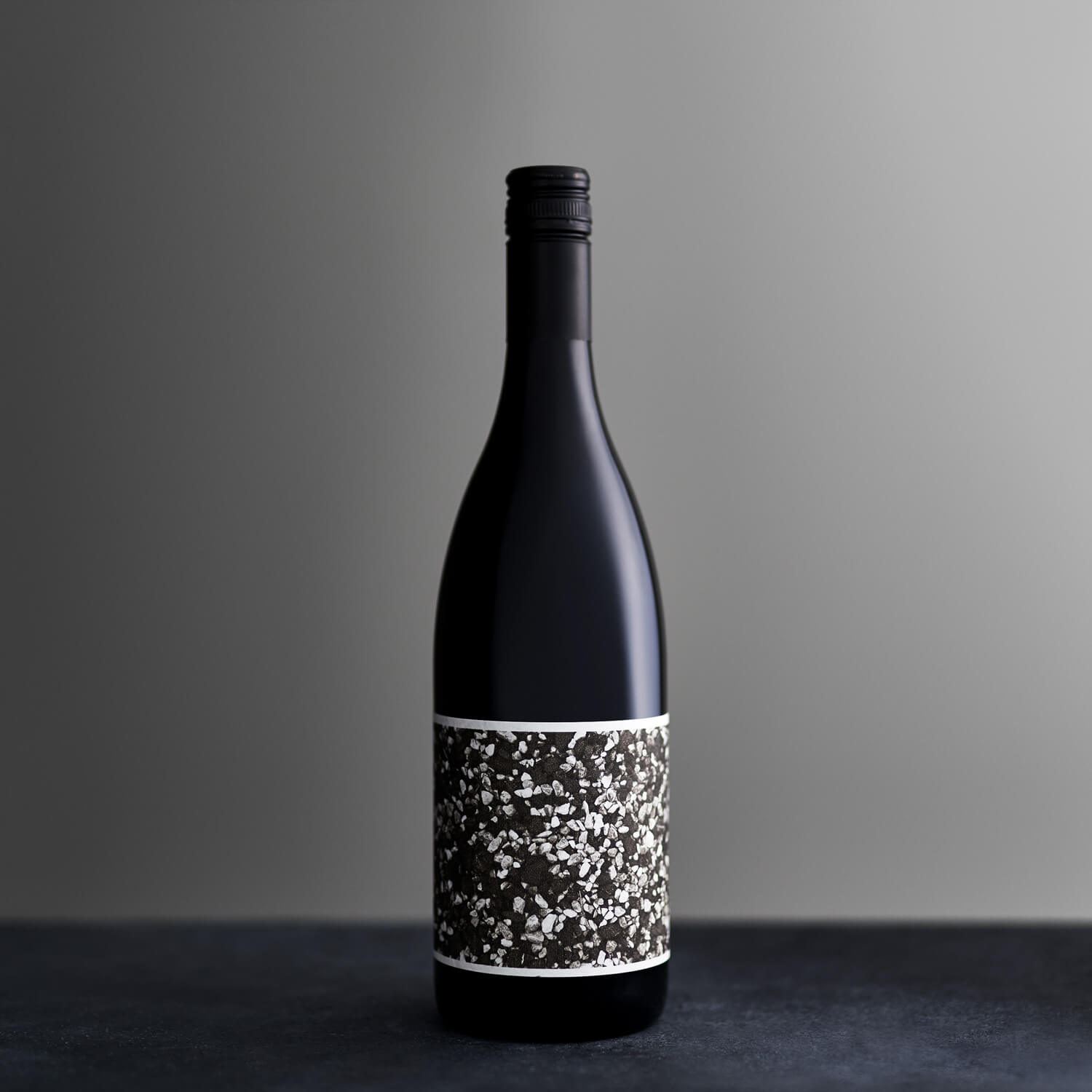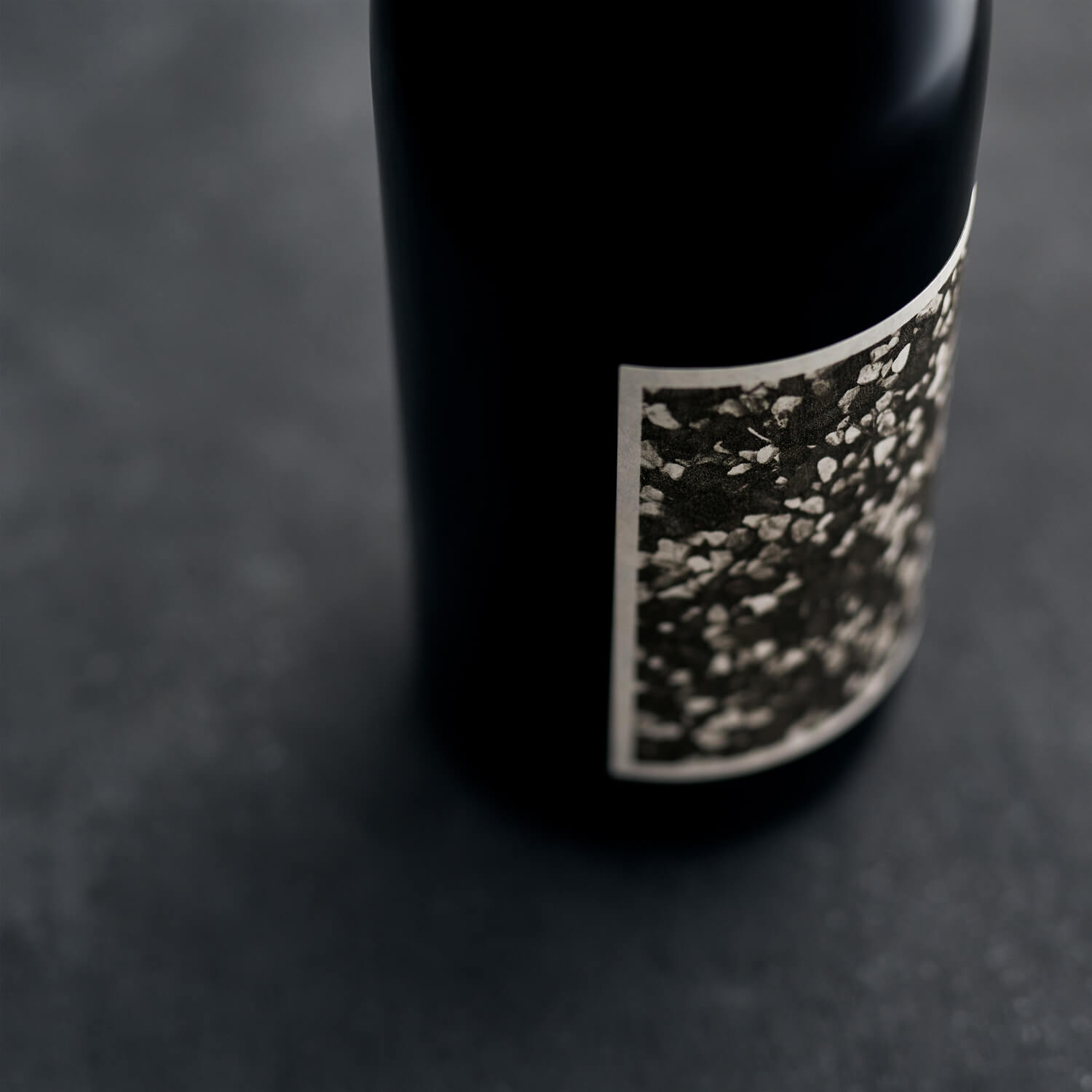A Merlot Carefully Fermented from Wild Yeast
Monster

How does a red wine earn the name ‘Monster’? Unlike the impression given by its name, it has a gentle, smooth feel. Without a prominent fruity flavor, the astringency is fantastically dissolved into the wine, profoundly delicious. The creator is Ryo Tanabe of Aperture Farms, Tomi City, Nagano Prefecture. In the last half of the 2000s, being interested in wines, Tanabe, then working at a sake shop in Tsukiji neighborhood of Tokyo, gradually became fascinated by winemaking. ‘While mingling with Japanese winemakers and tasting the wines they had made after much painstaking effort, I got the idea that I wanted to jump into that world which, however exacting, the pleasures outweigh the pains’, Tanabe remembers.
The location he selected for winemaking is Tomi City, Nagano Prefecture, which has relatively low rainfall for Japan. Obviously, he faced the prospect of no income until he succeeded in making wine. To earn living expenses, he became a newbie farmer, cultivating vegetables, and has continued to cultivate vegetables along with grapevines. Tanabe says that this experience helped prepare him to raise grapes for wine without applying synthetic agricultural chemicals or herbicides. Vegetables that have a fast cultivation cycle can also become diseased rapidly. Accordingly, he quickly developed an eye for spotting when a plant was sick and when it was about to become sick.
Because his favorite wines were all fermented with wild yeast, Tanabe unhesitatingly made plans that used wild yeast for fermentation. When tanking Merlot, a grape for red wine, the stems are removed by hand (‘destemming’) from grape berries, and without further processing the berries are allowed to ferment. During the fermentation, the berries are squeezed, skins and seeds are removed, and the wine is transferred to barrels, where fermentation continues to the end.
Unlike using cultivated yeast, it is impossible to completely control the onset of fermentation with wild yeast, an uncertainty that concerned Tanabe. Putting the wine in barrels during fermentation, and taking pains not to damage the berries during destemming both help to induce a clean fermentation. The result of this fermentation process is the taste of Monster.
In 2017, when he first succeeded in making wine, Tanabe suffered from hail and a personal illness, making this a difficult year. He called the Merlot ‘Monster’ because he himself was on the verge of yielding to its pungent taste. Yet the wine is filled with a reassuring gentleness that seems to push aside the pungence. ‘I change the name of the wine every year to reflect things that happened during the year and my own state of mind. I’m a lively person who keeps changing himself, and my wine reflects this. Perhaps the name of the wine is a kind of testimony to that’.


Aperture Farm
Area under direct cultivation: 1 ha
Name of fermenter: Ryo Tanabe
Variety and origin: Merlot (Higashi-Ueda, Tomi-City, Nagano Prefecture)
Volume: 750 ml
Price: ¥4,428 (including tax)
Vinification: After manual destemming, the berries are fermented as-is. Fermentation by wild yeast continues for about 2 months. Total sulfite use is 20 ppm. No sugar or acid are added. No filteration, no fining.
Viniculture: Insecticides (none), fungicides (lime sulfur, Bordeaux mixture), herbicides (none), chemical fertilizers (none), non-tillage (vines are not tilled).
www.facebook.com/ApertureFarmNOTE: The 'Natural Wines' series introduces naturalist wines and natural wines produced as naturally as possible over all stages from grape cultivation to fermentation. What exactly does 'as naturally as possible' mean? In this series, it means 'minimal human intervention' during the secondary fermentation process. It also means 'no addition of sulfites during primary fermentation and bottling', or perhaps 'sulfites limited to an absolute minimum amount', and 'depending on natural yeast, without using cultured yeast, without additives'. Other expectations include 'No sugars are added, no adjustment with acids, no finishing agents, and generally no filtration'. In terms of grape cultivation, the basic premise is to avoid using synthetic agricultural chemicals, but growing wine varietals in the Japanese climate by organic methods is extremely problematic at present, so keeping the use of agricultural chemicals to a bare minimum is a reasonable expectation. As a general rule, herbicides and chemical fertilizers should be completely avoided. To successfully make wine in this way, grapes must be kept robust, and conscientious oversight of the fermentation process is indispensable. The vintners who succeed in raising grapes as naturally as possible in respect of the terroir, and the wines that they produce, are the deserving subjects of this series.
TRENDING
-
The Tattoos that Marked the Criminals of the Edo Period
Traditional tattoos were strong signifiers; murderers had head tattoos, while theft might result in an arm tattoo.

-
Paris, Tokyo: Robert Compagnon
With his co-chef and talented wife, Jessica Yang, Robert Compagnon opened one of the top new restaurants in Paris: Le Rigmarole.
 3:31
3:31 -
Chiharu Shiota, Red Threads of the Soul
Last year, more than 660,000 people visited the retrospective 'Chiharu Shiota: The Soul Trembles' exhibit at the Mori Art Museum.

-
‘Before Doubting Others, Doubt Yourself. Who Can Truly Say a Dish Isn’t What It Used to Be?’
In ‘A Non-Conformist’s Guide to Surviving Society’, author Satoshi Ogawa shares his strategies for navigating everyday life.

-
The Story of Sada Yacco, the Geisha who Bewitched Europe
Described by Dazed magazine as the first beauty influencer, she has been restored to her former glory since 2019.





